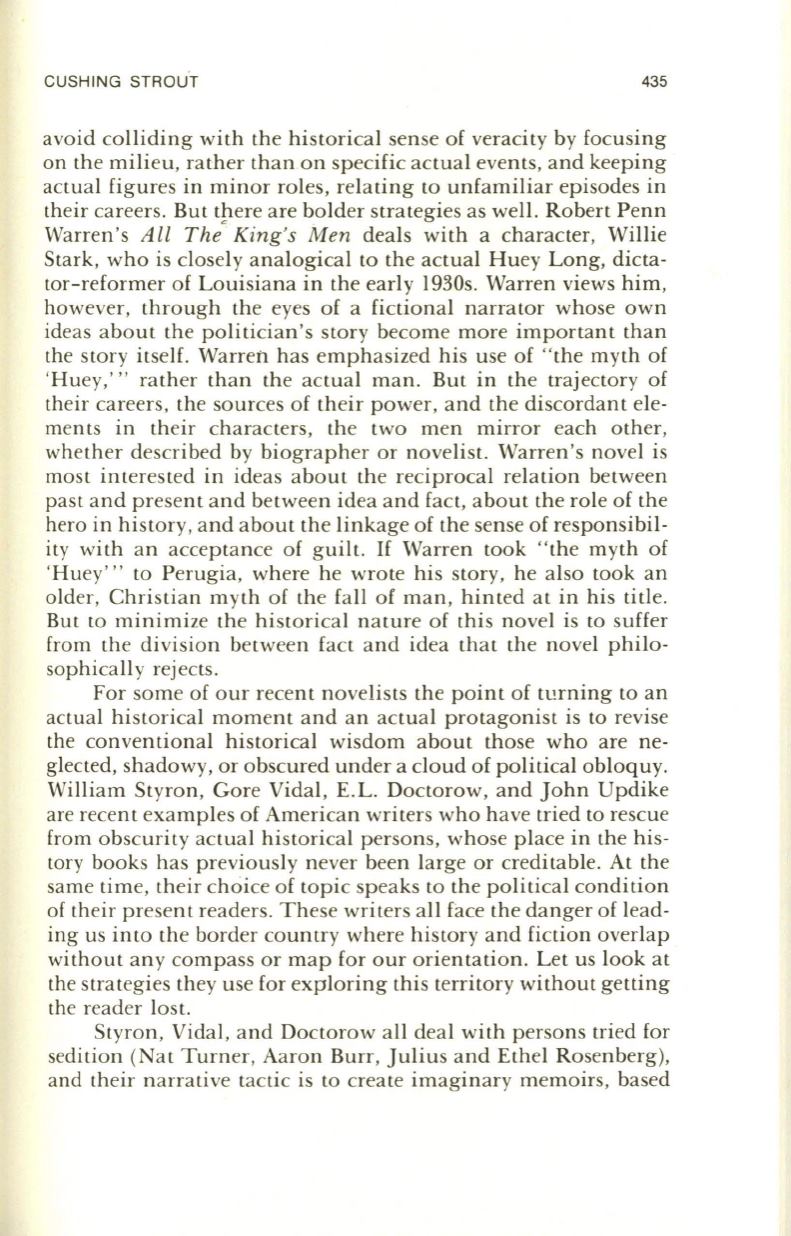
CUSHING STROUT
435
avoid colliding with the historical sense of veracity by focusing
on the milieu, rather than on specific actual events, and keeping
actual figures in minor roles, relating to unfamiliar episodes in
their careers. But tpere are bolder strategies as well. Robert Penn
Warren's
All The King's Men
deals with a character, Willie
Stark, who is closely analogical to the actual Huey Long, dicta–
tor-reformer of Louisiana in the early 1930s. Warren views him,
however, through the eyes of a fictional narrator whose own
ideas about the politician's story become more important than
the story itself. Warren has emphasized his use of "the myth of
'Huey,''' rather than the actual man. But in the trajectory of
their careers, the sources of their power, and the discordant ele–
ments in their characters, the two men mirror each other,
whether described by biographer or novelist. Warren's novel is
most interested in ideas about the reciprocal relation between
past and present and between idea and fact, about the role of the
hero in history, and about the linkage of the sense of responsibil–
ity with an acceptance of guilt.
If
Warren took "the myth of
'Huey'" to Perugia, where he wrote his story, he also took an
older, Christian myth of the fall of man, hinted at in his title.
But to minimize the historical nature of this novel is to suffer
from the division between fact and idea that the novel philo–
sophicall y rej ects.
For some of our recent novelists the point of tl!rning to an
actual historical moment and an actual protagonist is to revise
the conventional historical wisdom about those who are ne–
glected, shadowy, or obscured under a cloud of political obloquy.
William Styron, Gore Vidal, E.L. Doctorow, and John Updike
are recent examples of American writers who have tried to rescue
from obscurity actual historical persons, whose place in the his–
tory books has previously never been large or creditable. At the
same time, their choice of topic speaks to the political condition
of their present readers. These writers all face the danger of lead–
ing us into the border country where history and fiction overlap
without any compass or map for our orientation. Let us look at
the strategies they use for exploring this territory without getting
the reader lost.
Styron, Vidal, and Doctorow all deal with persons tried for
sedition (Nat Turner, Aaron Burr, Julius and Ethel Rosenberg),
and their narrative tactic is to create imaginary memoirs, based


